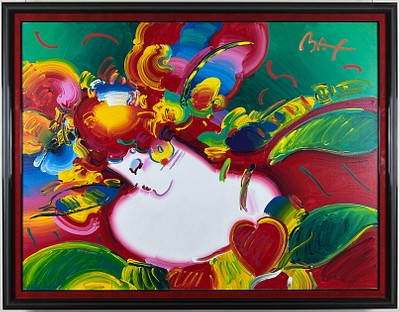Horace Pippin "Victorian Interior II, 1945" Print
Lot 818
Categories
Estimate:
$500 - $750
Absentee vs Live bid
Two ways to bid:
- Leave a max absentee bid and the platform will bid on your behalf up to your maximum bid during the live auction.
- Bid live during the auction and your bids will be submitted real-time to the auctioneer.
Bid Increments
| Price | Bid Increment |
|---|---|
| $0 | $5 |
| $100 | $10 |
| $200 | $20 |
| $1,000 | $50 |
| $5,000 | $100 |
| $10,000 | $200 |
About Auction
By Scottsdale Art Exchange
Jul 29, 2023
Set Reminder
2023-07-29 12:00:00
2023-07-29 12:00:00
America/New_York
Bidsquare
Bidsquare : Our Annual Midsummers Day Auction
https://www.bidsquare.com/auctions/scottsdale-art-exchange/our-annual-midsummers-day-auction-13196
This auction will feature 900 amazing items. The Auction will include 300 items for our fine art gallery and over 600 items from our consignment partners. Scottsdale Art Exchange sue@firerockfineart.com
This auction will feature 900 amazing items. The Auction will include 300 items for our fine art gallery and over 600 items from our consignment partners. Scottsdale Art Exchange sue@firerockfineart.com
- Lot Description
Horace Pippin (1888-1946) was an African-American painter who achieved recognition for his powerful and introspective artworks. Despite facing numerous challenges, including serving in World War I and experiencing a severe injury, Pippin developed his artistic skills and left a lasting impact on the art world. Here are some key points about Horace Pippin: 1. Early Life and Artistic Beginnings: Horace Pippin was born on February 22, 1888, in West Chester, Pennsylvania. As a child, he showed a strong interest in drawing and painting, but his formal art education was limited. He primarily taught himself through observation, books, and his own experimentation. 2. Military Service and Artistic Development: Pippin enlisted in the 369th Infantry Regiment, an African-American unit known as the "Harlem Hellfighters," during World War I. He sustained a severe right arm injury during combat, which later affected his ability to paint. Despite this, he persisted and developed unique techniques to accommodate his limited mobility. 3. Artistic Style and Themes: Pippin's style is characterized by a combination of realism, folk art, and storytelling. His paintings often depicted scenes from African-American history, biblical stories, and daily life, evoking a sense of nostalgia, humanity, and social commentary. Pippin's use of bold colors, expressive brushwork, and attention to detail gave his works a distinctive and emotionally charged quality. 4. Recognition and Success: Pippin gained recognition in the art world after his paintings were discovered by art collector and dealer Christian Brinton. His work was exhibited in major galleries and museums, including the Museum of Modern Art in New York City. Pippin's paintings received critical acclaim for their sincerity, honesty, and unique perspective. 5. Artistic Career and Impact: Pippin's artistic career was relatively short but impactful. He created around 140 known paintings during his lifetime. His artworks captured the struggles and triumphs of African-Americans, often addressing themes of racial injustice, war, and the resilience of the human spirit. Pippin's paintings resonate with viewers due to their heartfelt and deeply personal narratives. 6. Legacy and Influence: Horace Pippin's contributions to American art are highly regarded, particularly for his ability to convey complex stories and emotions through his paintings. His work inspired subsequent generations of African-American artists and played a significant role in broadening the representation of African-American experiences in the art world. 7. Continued Appreciation: Pippin's art continues to be celebrated and exhibited in major museums, galleries, and collections. His paintings are treasured for their visual impact, historical significance, and contribution to the African-American artistic tradition. Horace Pippin's artistic journey, resilience, and powerful storytelling through his paintings make him a significant figure in American art history. His ability to capture the human experience with empathy and honesty has left a lasting impact on the art world, inspiring artists and viewers alike to engage with important social and historical narratives.
Measures 30 x 25.Good condition. No rips, tears, creases.Condition
- Payment & Auction Policies
-
Available payment options
-
-
- Buyer's Premium



 EUR
EUR CAD
CAD AUD
AUD GBP
GBP MXN
MXN HKD
HKD CNY
CNY MYR
MYR SEK
SEK SGD
SGD CHF
CHF THB
THB



















